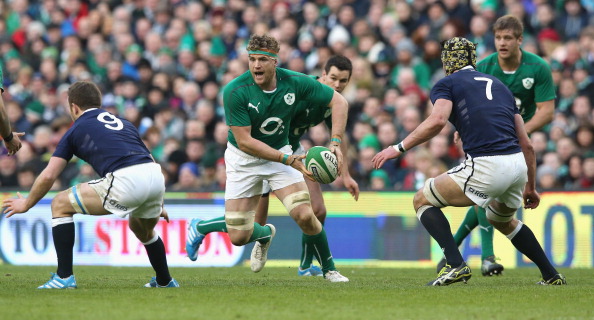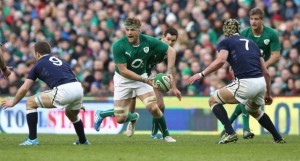By Claire Glancy
Competition for places
For the first time in a long time, players are not going to be guaranteed their position in the starting XV or matchday squad. Understandably the likes of Paul O’Connell or Sean O’Brien would be expected to regain their place once fit but I suppose the point is that there doesn’t have to be the sense of panic such absences would previously have brought given the performances of their replacements, Dan Tuohy and Chris Henry. The same goes for the front row. Schmidt had the luxury of bringing on three younger, less experienced players but neither the scrum nor the team suffered as a result. An international squad should not be a case of 15 players plus the rest, to be successful everyone involved needs to know that they have a chance of playing. Schmidt is spreading that belief, from the likes of Andrew Trimble making his first Six Nations start in two years to Martin Moore winning his first cap or Simon Zebo waiting in the flanks to be recalled.
French fatigue hasn’t hit Sexton
There has been much concern about Jonathan Sexton since his move to Racing Métro. While his compatriots like Jamie Heaslip and Brian O’Driscoll have made between seven and ten appearances for Leinster, the French are determined to get their money’s worth with the fly-half who has featured 19 times for his club already this season. Sexton has been refreshingly honest about the trials of his French move and even warned his international team-mates against it, but if homesickness has been a problem for the him it’s worked to Ireland’s advantage because on Sunday he relished being back on home soil. There is no sign of fatigue in Sexton. He’s energized, excited and now even more experienced from his time in the Top 14.
Consistency is key
It’s a cliché we’ve heard repeated by Ian McGeechan on Lions tours and Stuart Lancaster at the beginning of his term with England but after the lows of last year, Ireland had to get some pride back in the jersey. They’ve started this tournament with a win, however they managed the same last season against Wales at the Millennium Stadium before their tournament ground to a halt at half-time in that match. It is clear to see the focus and technical detail they are applying to the set piece. The forwards seem to understand their roles and in Cian Healy, Ireland have a world class prop forward. Whether it be the scrum or line out, Ireland now have a set-piece that has the potential to challenge any side in the world. Even in the absence of Paul O’Connell, the pack wasn’t without its leaders with Rory Best and all of the back-rowers having skippered both club and country.
Schmidt’s scheme taking shape
Elements of Joe Schmidt’s style are starting to show, particularly in the way Ireland are looking to attack: offloads, interplay between forwards and aggressive running lines from starter plays. Sexton is mixing up his game and providing quick ball to the outside backs through fast passing and clever wrap around lines – all of which will continue to challenge defences. A willingness to build pressure by looking to score tries rather than just take three points shows an air of confidence and self-belief amongst the team.
Wales will be a greater physical and mental test
With only six days to recover, Ireland have to switch their minds quickly on to the challenges that await them on Saturday. The firepower of Jamie Roberts, George North and co will put the Irish defence under pressure, while the Welsh back row will be out to stop Sexton developing any attacking pattern for Ireland. Defensively Ireland held up against Scotland but the coaches will need to get Luke Marshall and Brian O’Driscoll into the attacking game more often if they are to break down the Welsh.








